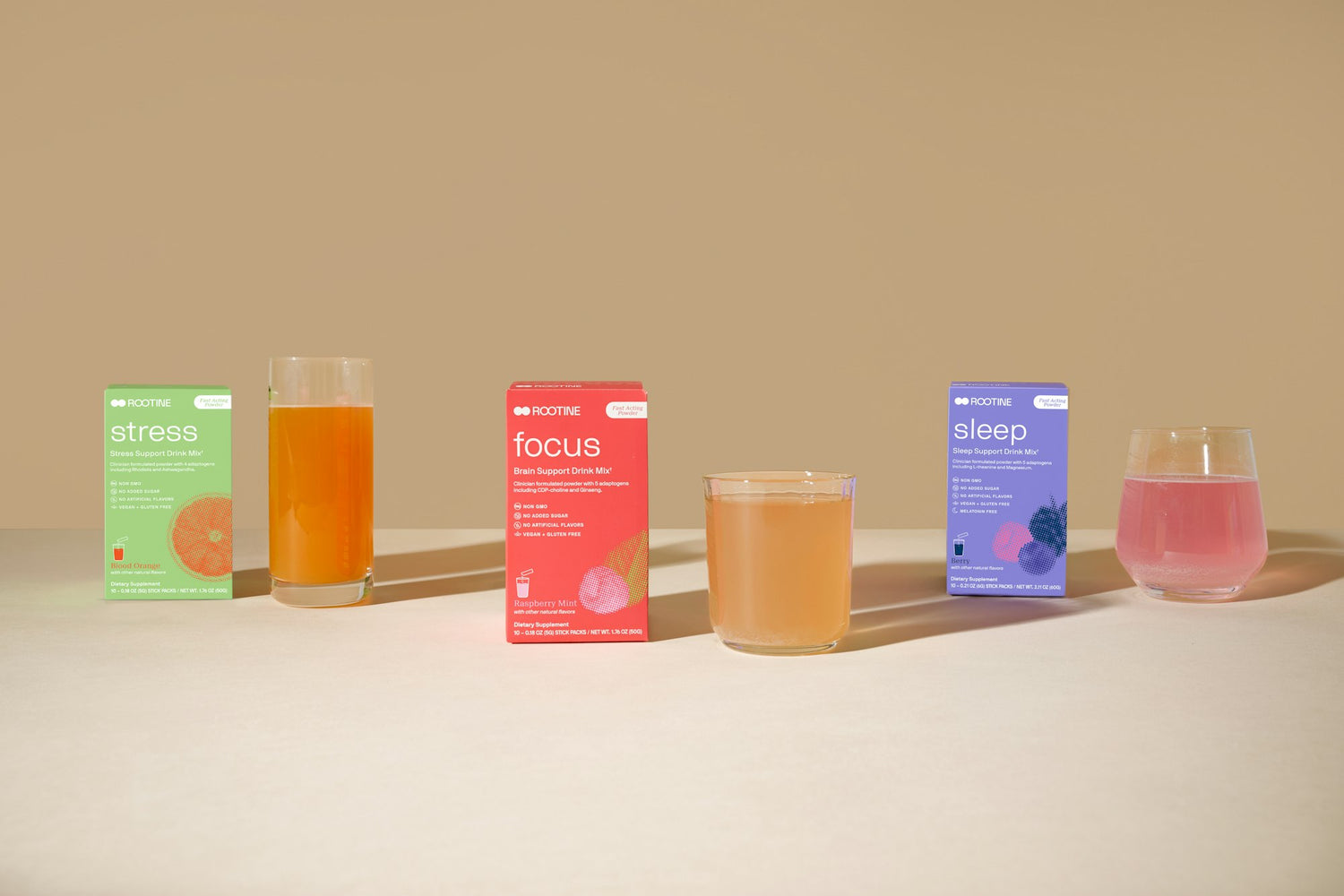Vitamin D, the “sunshine vitamin," is one of the most popularized and important vitamins, and it has a good deal of research behind it.
Most mainstream media pieces do a decent job of breaking down important details about D. However, there’s just one issue which is that these articles are written with general recommendations for the general population. At Rootine, we're about precision, not generalities.
A typical online article overloads you with causes of vitamin D deficiency and the benefits of vitamin D, but rarely mentions that lifestyle, genetics and current blood levels all play a role in how much vitamin D you need. These three factors are vital for determining the correct dosages, without resorting to trial and error.
Let’s keep this in mind as we dive deeper into Vitamin D’s role in our daily lives.
What’s it Good For?
Vitamin D helps improve your mood, can reduce anxiety and depression, and may help with weight loss, flu resistance, healthy teeth, and range of other things. Too little vitamin D is associated with depression, weight gain, weaker bones (osteoporosis), weaker muscles, poor immune system, and so on.
Rootine does the heavy lifting when it comes to determining key genetic variations that impact vitamin D requirements and your current blood levels of vitamin D, but you know your lifestyle best. Below are some factors you should look out for when considering how your lifestyle affects your Vitamin D needs.
Feeling Like Sunshine
Your body produces Vitamin D when sunlight hits your skin. Vitamin D3 is one of six compounds in the vitamin D family, though D2 and D3 are the versions the scientific community pays the most attention to. We’ll get into the reasons behind this by the end, but for now we’ll focus on D3.
Potential causes of vitamin D deficiency include:
- Living in a place with very little sun (far from equator, urban environments, polluted areas)
- Being a hermit and staying indoors
- Being overweight
- Not eating enough fish or dairy
- Having darker skin
You can’t change some of these factors, so you should focus on what you can control (i.e. diet and exercise). Fish and shellfish are major sources of vitamin D3 - salmon, sardines, shrimp, and so on. So are dairy products like yogurt and fortified milk. Exercise has also been linked to higher levels of Vitamin D and can help you maintain a healthy body weight, which impacts your vitamin D requirement.
An easy acronym to remember is FSS - food, supplements, sunlight give you D3.
Let’s explore what D3 actually does in your body.
Calcium ❤️ D
Vitamin D3 is involved with the uptake of calcium from food, which is why it’s important for maintaining strong bones and preventing osteoporosis. We take a look at Calcium and the associated LCT gene here - it’s definitely worth a read as this gene variant impacts your ability to digest lactose and plays a major role in how much calcium you consume daily.
How Vitamin D Works
The body has a receptor that is activated by vitamin D. The associated gene is conveniently called the Vitamin-D-Receptor, or VDR for short. Proper amounts of vitamin D activate this receptor and initiate healthy processes in your body. Think of the VDR as the lock and vitamin D is the associated key.
If you’re part of the 11% who have a disrupted VDR gene, you likely need much higher amounts of Vitamin D to activate the receptor.
There is also a cascade effect if your VDR gene is disrupted, since vitamin D and calcium are linked. If you have a VDR mutation and do not have additional vitamin D to activate the VDR, your Calcium absorption is affected and you may need to take additional Calcium as well.
As you can see, neither nutrients nor their corresponding genes should not be siloed as they have complex connections to other nutrients, other genes, and greater metabolism. Mainstream media and many supplement companies fall into the trap of talking about only one nutrient and failing to discuss the overall impact and additional steps (e.g. additional nutrients, changes in lifestyle) that should be considered when discussing a nutrient deficiency or gene mutation. This is why Rootine's approach is vital. Not only do we do the complex scientific work for you, but we take a comprehensive approach and weigh all data against itself to fully account for you nutrient needs.
How Much is Enough?
There’s huge disagreement in the scientific community on the proper daily dosage for Vitamin D3. Even the editor-in-chief at the Harvard Health Letter is essentially guessing it’s 2,000 IU daily, or 50 mcg. Other sources suggest much lower intakes at 400-800 IU, or 10-20 mcg. And yet other sources, like the Vitamin D Council, recommend adults take 5,000 IU daily, or 125 mcg.
At Rootine, we look at your vitamin D blood levels, the VDR gene, and your daily habits and use the totality of information to determine exactly how much vitamin D you need.
Vitamin D3 is a crucial nutrient for the absorption of calcium, maintenance of bone mass, functioning of muscles, keeping teeth healthy and boosting the immune system, it’s not something you want to trial and error until you get it right.
What about D1, D2, D4, D5, D…?
The media focuses on two Ds - Vitamins D2 (called ergocalciferol) and D3 (called cholecalciferol), with the latter being more popular. There’s debate whether D3 is more important than D2. The Institute of Medicine, for example, says D2 is just as effective as D3 but many other studies suggest that Vitamin D3 is much more effective than D2, especially for older women.
Rootine uses vitamin D3 for a two reasons:
- the scientific consensus has fallen on D3 being the better form.
- D3 is a naturally occurring nutrient within our body. When sunlight hits our skin, we produce D3, not D2 (which naturally occurs in plants.
Here’s what Dr. John Cannell, founder of Vitamin D Council (how’s that for status) says about D2: “If you take ergocalciferol, or ‘vegetarian’ vitamin D2, be warned. It does not normally occur in the human body...It may actually partially block vitamin D actions...All bets are off in terms of measuring blood levels.”
And the mysterious D1, D4, and D5? Drugs.com says D1 was discovered to be “a mixture of compounds rather than a pure Vitamin D product”, so the term is not in use anymore. Vitamins D4 and D5 are more elusive: D4 is found in certain mushrooms and D5 is man-made and was manufactured as a treatment for various cancers.
There’s also D6 and D7 (!) but we think you've had your fill of Vitamin D fun-facts by now.



